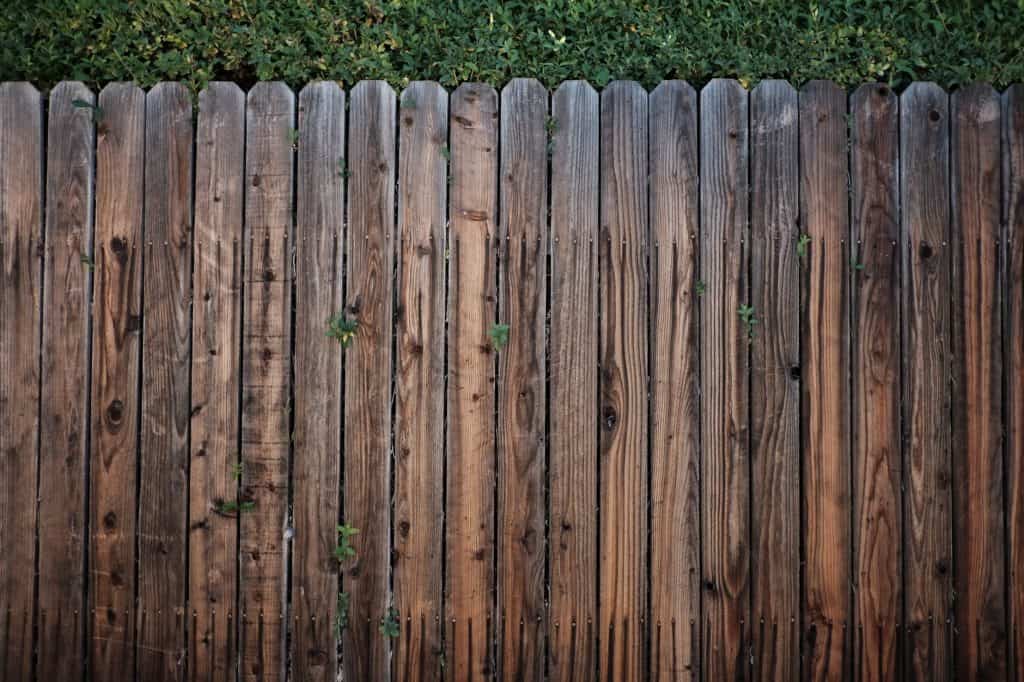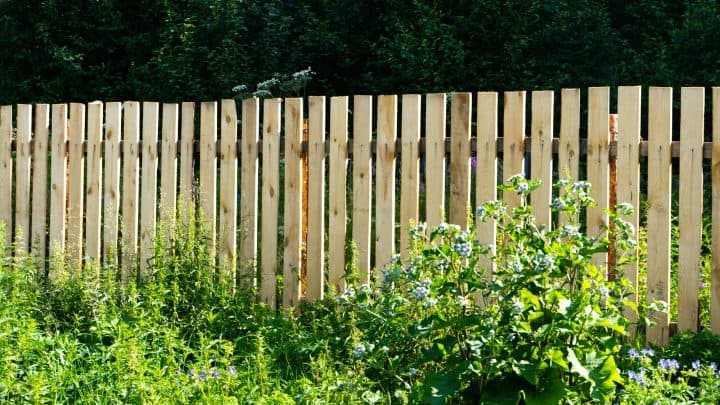As a homeowner, you naturally want to take care of your property. Of course, this includes everything on your property as well — including fences. However, since are typically installed around property lines, it’s not always clear to the naked eye who owns the fence in question.
Since property boundaries are frequently the source of disagreement, contention, and litigation between neighbors, it’s important to get these facts correct. As such, you’ll want to make sure you know which fence is yours to maintain and own.
There are quite a few options to help determine if a fence is yours or not — checking the deed, the property line map, the survey, or any available line markers. Additionally, you can use certain apps to determine where your property lines are.
In this article, I’ve put together an in-depth guide to help you determine which fence falls in your property and thereby is your fence. I also discuss a few widespread misconceptions about fence ownership.
Disclaimer: This isn’t an exhaustive list of ways to determine your property boundaries. I am not a lawyer and this is not legal advice. If you feel like you need legal advice, you should contact an attorney.
1. Check the Deed to the Property
You should find the deed to your property within your house’s paperwork when you bought it. It’ll give you all your land details, which includes:
- The lot and block number
- The lot shape
- Dimensions of the lot
- Other distinct landmarks that will help define your lot
Once you have access to these details, you can use a tape measure to approximate your property lines yourself. Here’s a step-by-step guide to help you out:
- Start your measurements from a designated point described in the deed.
- Stakeout points as you go.
- Check these against the measurements stated on your property deed.
Once you have an idea of the location of your property lines, you can make a good guess whether or not the fence is on your property and, therefore, yours.
If your property is old, the original features and details of your land may not be the same or may not even be there anymore.
If the deed doesn’t have the measurements of your property, you can seek help from your real estate agent or lawyer.
2. Check the “Plat” or Property Line Map
A plat or property line map is a diagram, drawn-to-scale, showcasing the divisions of a piece of land.
Apart from the property outline, a plat typically includes:
- The various surrounding landmarks.
- Geographical features within and around your property.
- The neighboring lots’ property lines.
Properties that are a part of a subdivision commonly have property line maps. You can also find the plat for your property in the following places:
- The paperwork of your property
- Your local assessor’s office
- The website of your local assessor
Once you have this map, you can easily check if the fence you’re eyeing stands within your property or your neighbor’s.
3. Look at a Property Line Survey
Suppose the technical description or an existing plat doesn’t exist for your property. In that case, you can use a property line survey to determine the legal measurements of your property lines. A property line survey is the most accurate way to find this information.
A property line survey is legally valid and can be used for any unfortunate boundary disputes.
Here are the two most common ways you can get a property line survey:
- Hire a professional surveyor
- Look up an existing property line survey
Hire a Professional Surveyor
The easiest way to get a property line survey is by hiring a licensed professional to prepare one for you. Most states require licensure, but it’s always best to check the requirements as they vary per state.
A professional surveyor can accurately measure your property’s boundaries & limits and tell you where your property ends and your neighbor’s property begins.
Look up an Existing Property Line Survey
It’s likely that a property line survey already exists for your property. If it does, it’s likely in the hands of your property’s mortgage company, local assessor’s office, municipal building department.
You can inquire at any or all of these places for your property line survey. If they have it, they’ll surely give you a copy. Some offices may require a fee to produce this document for you. This fee can range from a few dollars to a few hundred.
4. Look for Property Line Markers
During the initial land survey for your property, surveyors were likely to have marked different points in your lot, reflected in your property deed or plat. Markers are usually metal stakes with caps.
If your property is old or if it’s been a while since the last property survey, these markers may be difficult to find. They’ve likely been buried or moved over time.
You can try using a metal detector to help you find these markers.
5. Determine Property Lines With an App
If you don’t have the budget for a professional to map out your property lines, you can do it yourself.
LandGlide is a cool app that uses your phone’s GPS feature to figure out your property lines. The app is also free for the first seven days.
Note that this method is not guaranteed to be as accurate as a plat or a professionally done property line survey. It’ll only give you a rough approximation of your property’s boundaries.

Misconceptions About Fence Ownership
Here’s a quick look at some of the most popular misconceptions about fence ownership:
- The “good side” of the fence is yours.
- The left side of the fence is yours.
The “Good Side” of the Fence Is Yours
The “good side” of the fence is the more aesthetically pleasing side, while the “bad side” is where the fence’s frame or rails are located.
Now, there’s this misconception that if the “good side” of the fence is facing your property, then you own that fence.
This is untrue.
Not only are there no property rules stating this fact, but also think about the confusion that can happen if both sides of the fence look the same with visible rails or frames. Which’ll be the “good” and the “bad” side?
The Left Side Fence on Your Property Is Yours
This assumption is more common in the UK. It says when you are in front of your property, facing inward, the left side fence is yours.
This is also not true.
The fallacy becomes obvious when you consider irregularly shaped plots. In that case, how will you determine the supposed left-side fence that is yours?
Who Is Responsible for Repairing or Renovating the Fence?
The owner of a fence is responsible for repairing and renovating it. If the fence is on your property, you are solely responsible, whereas if it’s on your neighbor’s property, they are responsible. If the fence sits on top of the property line, the responsibility is shared equally.
That being said, when planning to paint, renovate, repair, or replace a fence, do your best to communicate with your neighbor as both of you benefit from the fence.
Rules on Painting a Shared Fence
When it comes to cosmetic things like painting or staining your fence, you have the freedom to do what you want with the side of the fence that faces your property. Just be sure not to use any chemical that can damage the fence since it’s a shared property.
It also helps to communicate your plans regarding your fence and your planned painting or renovation schedule to your neighbor so that they feel informed.
Ask Your Neighbor To Help With Fence Maintenance
It’s always a good idea to talk with your neighbor regarding any plans you have with your fence. Replacing your fence can temporarily remove the physical barrier between your properties, affecting privacy and security.
Even if the fence is legally yours, you can share costs with your neighbor, if they are willing, since you both benefit from the fence. Shared costs also mean shared decisions regarding the new fence’s materials, look, and design.
However, suppose your neighbor can’t afford to chip in or is unwilling to contribute to the cost of replacing the fence. In that case, you will have free reign over the fence’s design. Just be sure that it doesn’t go against any HOA or building regulations in your area.
Final Thoughts
The best way to know which fence is yours is by checking where it stands based on property lines. If the fence sits on the property line itself, ownership is shared between you and your neighbor.
The owners and the neighbors usually share responsibility for a fence’s repair and maintenance since both parties benefit from a fence’s security and privacy.
Sources
- This Old House: How to Find Property Lines
- Rocket Mortgage: Property Lines: Everything you need to know
- Quicken Loans: Property Lines: What they are and how to find yours
- Birkdale Sales: Which side of the fence is mine? Drawing the line on boundaries
- Jacksons Fencing: Which fence is mine?
- AVS Fencing: Which side of the fence is mine?
- Youtube: PMI Birdy Properties – What section of the fence do I own? Good side or bad side?

